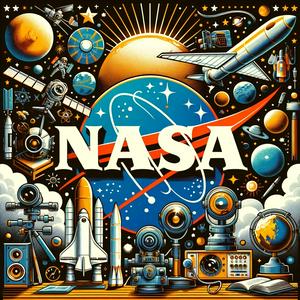NASA Faces Scrutiny Over Alleged Budget Cuts, Whistleblower Warnings of Risks to Astronaut Safety
This week’s headline: NASA is facing intense scrutiny after whistleblower reports surfaced, alleging that the agency has been prematurely enacting major budget cuts outlined in President Trump’s proposed fiscal year 2026 budget. According to documents released by the Senate Committee on Commerce, Science, and Transportation, NASA began implementing these shifts as early as this past summer—even though Congress has not yet approved the budget. Staff at Goddard Space Flight Center say they’ve already witnessed impacts, with the agency beginning to reorganize, shut down historic science facilities, and reduce their workforce, all in lockstep with the White House’s budget vision. As of today, almost half of the Goddard campus is set to be abandoned under a new master plan intended to save costs, with upgrades and demolitions scheduled through 2037.The report claims that NASA leadership was urged to ignore existing congressional funding and “do the PBR”: if a project wasn’t included in the President’s budget request, it was quietly shelved. NASA officials insist they are staying within legal boundaries and “intend to follow the will of Congress,” but whistleblowers have described a climate of fear, alleging pressure to suppress safety concerns, cut research jobs, and curtail independent oversight. One whistleblower even warned, “We’re very concerned that we’re going to see an astronaut death within a few years” due to what they described as a “chainsaw approach” to agency cuts.This has real-world impacts. For American citizens, it means fewer science opportunities and possibly more risks for astronauts. For businesses and organizations, contract opportunities could evaporate overnight, and long-planned missions might get canceled or delayed. State and local governments—especially in places like Maryland and Texas that host large NASA facilities—are bracing for economic fallout as campus footprints shrink and jobs disappear. Internationally, NASA’s ability to collaborate could be hobbled, potentially undermining flagship projects with the European Space Agency or ISRO, such as the joint NISAR radar satellite mission whose first images just arrived.Not all the news is grim. NASA and partners including Blue Origin are preparing to launch the ESCAPADE mission to Mars, aiming to uncover secrets about how solar wind interacts with the Red Planet’s atmosphere. Meanwhile, the International Space Station celebrates 25 years of continuous human occupation, underscoring NASA’s unique leadership in international scientific cooperation.Still, the immediate future hinges on politics. Congress has yet to finalize the agency’s funding, and watchdogs insist the public stay engaged. As Senator Maria Cantwell put it, “NASA faces an existential threat under the Trump Administration. Like other premier science agencies, NASA has thrived on consistent, bipartisan investments, which are essential to America’s economic prosperity and technological supremacy.”Listeners can weigh in by contacting their representatives and voicing support for science funding. Key dates to watch: Congress is expected to make final budget decisions later this month. NASA will host open forums and media briefings, barring shutdown-related delays. For more resources and ongoing updates, head over to nasa.gov and the official Senate committee pages.Thanks for tuning in, and don’t forget to subscribe for your weekly space policy update. This has been a Quiet Please production, for more check out quietplease.aiFor more http://www.quietplease.aiGet the best deals https://amzn.to/3ODvOtaThis content was created in partnership and with the help of Artificial Intelligence AI



